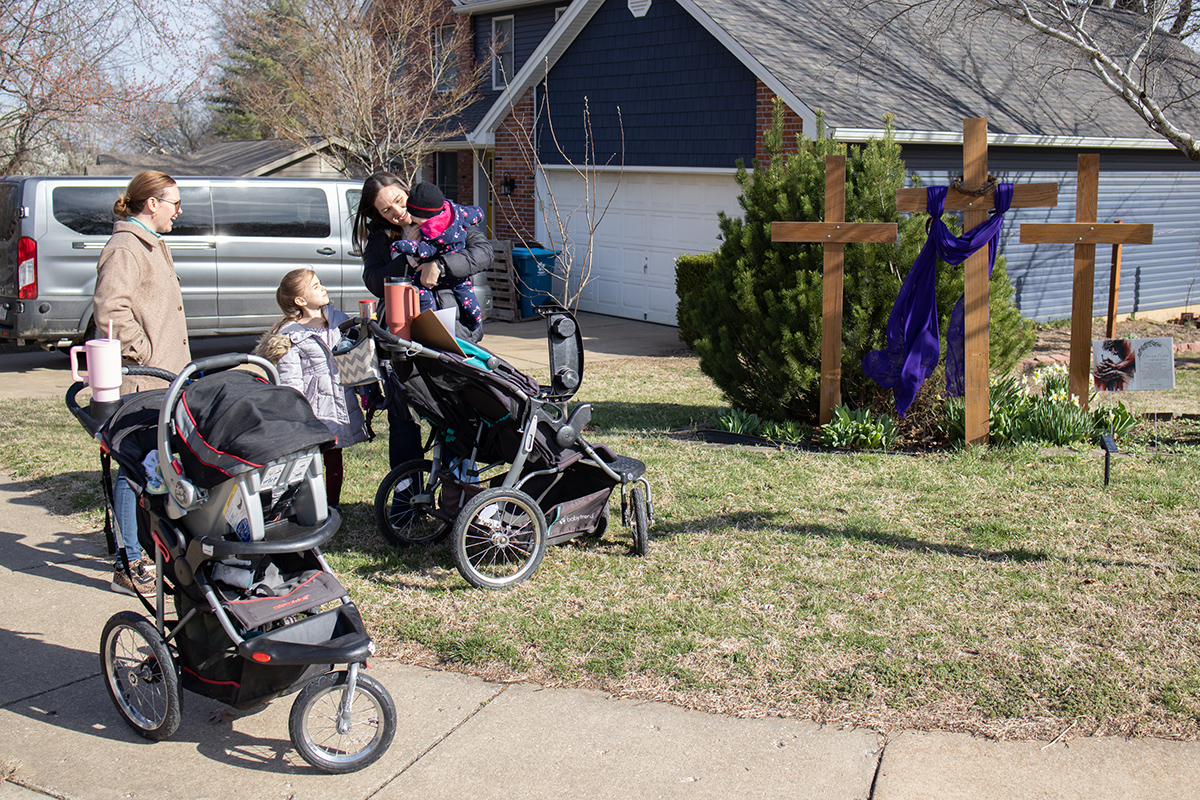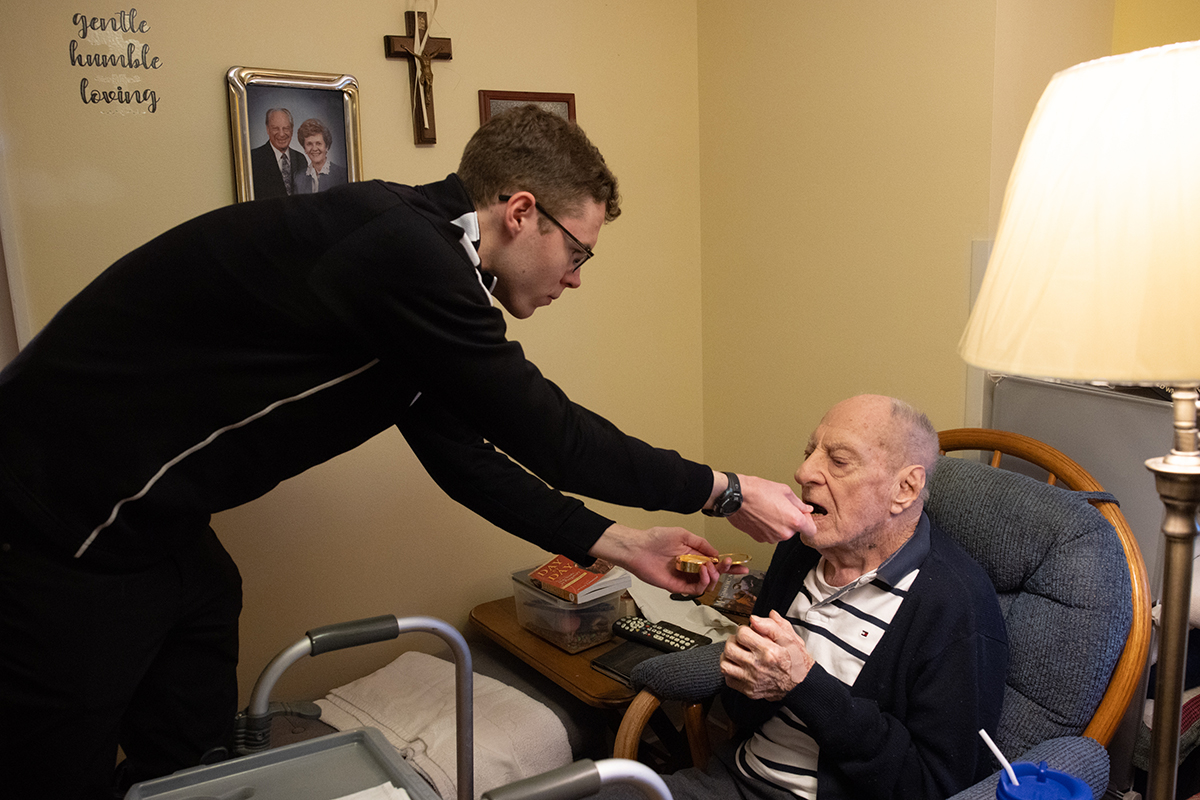Tips on ways to address isolation, loneliness

It’s important for everyone to check on people who may be experiencing difficulty with isolation
Loneliness and social isolation in older adults affect a significant number of people in the United States.
A new report from the National Academies of Sciences, Engineering and Medicine (NASEM) shows that more than one-third of adults aged 45 and older feel lonely, and nearly one-fourth of adults aged 65 and older are considered to be socially isolated. Older adults are at increased risk for loneliness and social isolation because they are more likely to face factors such as living alone, the loss of family or friends, chronic illness, and hearing loss.
People generally are social by nature, and high-quality social relationships can help them live longer, healthier lives, according to the Centers for Disease Control and Prevention.
The impact of COVID-19 is adding to the problem. In a study by the University of Michigan in June, 56% of people over the age of 50 said they sometimes or often felt isolated from others, which is double the 27% who felt isolated from others in a similar poll in 2018.
Checking in
Cardinal Ritter Senior Services (CRSS) reports that seniors in residential communities live in an environment that allows them to remain active and social. Seniors living alone in their own homes remain at risk of isolation, always a concern to CRSS especially this time of year, and COVID-19 has increased that risk.
CRSS Social Services Program ensures that these seniors have the supports they need. CRSS’ social workers continue to check in with clients by phone or Facetime and still make visits to doorsteps for supply deliveries and wellness checks. These in-person check-ins mean the social worker and clients remain a safe distance from each other, but the social worker is still able to provide clients with much-needed companionship while making sure the clients have the basic supplies they need.
One way to help CRSS with these seniors during the holiday season is by participating in the CRSS Adopt a Senior Program. The program provides 50 seniors who live without adequate means gifts such as clothing, kitchen supplies, bedding, or gift cards for food and other necessities.
If you are interested in adopting a senior, email lindelicato@crssstl.org or call (314) 888-6716.
Addressing Isolation

The isolation is something Kathleen O’Reilly, parish nurse at Immaculate Conception in Maplewood, has addressed many times, in person and through the parish bulletin.
Since COVID-19 restrictions went into place, O’Reilly has stayed in touch with elderly parishioners through phone calls, checking on their well-being, keeping them connected to the parish and praying with them. She also encourages them to tune into to Mass on radio and TV.
O’Reilly said Sunday TV Masses are streamlined and on KTVI, Channel 2.2; WRBU, Channel46; EWTN network; and on Covenant Radio.
O’Reilly told of a study from Harvard University that found that attending religious services plays a part in coping with despair and difficult times. “It doesn’t come as a surprise to most of us, but it’s nice to see that science acknowledges the role that faith has on our mental health,” she said.
>> Safe yet social response
One of the populations most vulnerable to the COVID-19 virus is senior adults who also face increased isolation as a result of the recommended social distancing measures. As soon as COVID-19 became an issue, Cardinal Ritter Senior Services (CRSS) realized that it needed to take action immediately if the seniors living in its residential communities as well as in the St. Louis area were to remain safe.
From the earliest days of the pandemic, CRSS committed to protecting the well-being of its residents, their families, and employees. While residents were quarantined, CRSS knew that residents’ mental health was at risk. As family visits and group activities were put to a temporary halt, CRSS’ assisted and skilled nursing communities began to schedule virtual visits between residents and families using facetime on iPads. This adjustment meant that families could stay in touch, and senior residents would not feel isolated from their loved ones. The organization devised creative ways to keep their residents’ spirits up, from getting the St. Louis Blues Mascot, Louie, to make window visits to creating encouraging signs to put outside resident windows.
When cases in the St. Louis area began to decline, CRSS maintained its usual routine of activities while still taking proper safety measures and promoting social distancing. “I continue to be amazed by the strength and support of residents, their families, and our staff since the pandemic began,” said Chris Baechle, CEO of CRSS. “Although things may look a little different, our staff continues to maintain normalcy inside our communities. I have seen Ted Drewes brought in, virtual trips around the world taken, bingo called over the intercom, and celebrations for special occasions occur all while remaining safe.”
>> Tips for people who are isolated:
• Dust off a Christmas card or phone list and call the people on it, friends you may not have had time to visit with for a while. “The people who you call are happy that you thought of them,” recommends Kathleen O’Reilly, parish nurse at Immaculate Conception in Maplewood.
• Catch up on spiritual reading and the Bible, remembering that God is still with us
• Maintain gratitude. Keep a journal of gratitude and re-read it.
• Exercise regularly even if it’s in your chair, walking around the house or dancing to some music; sit outside when you can. Many Area Agencies on Aging provide virtual fitness classes. In addition, the YMCA (www.ymca360.org) provides many prerecorded and live fitness classes online that allow you to take things at your own pace.
• Cook a meal. Freeze some of the meal and give it to a neighbor or relative.
• Pray. O’Reilly wrote that “I am continuously inspired and strengthened by those who have gone through so much and who in spite of their fragility are indeed prayer warriors with a cheerful heart. When their bodies no longer allow them to do the work they used to do, they utilize this phase of life to pray feverishly for their families and the world around them. So many parishioners come to mind who have taken charge of their attitude, and we all benefit from their prayers. We thank God for their continued spiritual work.”
• Write a note or send a card. Mailing a short note to a friend or family member is simple to do and can bring a smile to someone’s face while cheering you up in the process.
• Many organizations have developed call lines that provide a friendly voice who can offer emotional support. Contact your local Area Agency on Aging to learn whether one is available in your community. If not, call one of the telephone services listed below.
— Institute on Aging’s Friendship Line: (800) 971-0016
— AARP Friendly Voices: (888) 281-0145 (English) or (888) 497-4108 (Spanish)
• Many museums have virtual tours that help visitors see world-renowned artwork. Theaters are taking music, dance and other performances online.
• Volunteer and share your skills from home. Develop a virtual mentoring relationship with a student through a local college or connect with your local Area Agency on Aging to find opportunities to help others.
Ideas for reaching out to someone who is isolated:
• Stop by with a bowl of soup, bakery goods or other prepared food. You can leave it on the doorstep to maintain social distancing.
• Find a task for them. Ask them to draw a sketch, write a poem or short story, start journaling or write a biography or family history. Help connect them with a volunteer opportunity they can do from home.
• Ask them to pray for you or another intention.
• Call to let them know that they are still valued and respected for their wisdom. It doesn’t hurt to ask for their advice or opinions on things. We forget to do that.
• Help someone connect with friends and family. “Stuck at Home Guide: How to Get Online,” a guide from engAGED partner Senior Planet, contains helpful tips for getting started online, on social media and on Zoom meetings. Visit bit.ly/2HUlgXC.
(Tips provided by Kathleen O’Reilly and the Eldercare Locator.)
>> Resources
Your doctor can assess your risk for loneliness and social isolation and get you connected to community resources for help, if needed. The following national organizations also offer helpful resources:
Area Agencies on Aging (AAA) — A network of more than 620 organizations across America that provides information and assistance with programs including nutrition and meal programs (counseling and home-delivered or group meals), caregiver support, and more. The website can help you find your local AAA. Visit www.n4a.org.
Eldercare Locator — A free national service that helps find local resources for seniors such as financial support, caregiving services and transportation. It includes a brochure that shows how volunteering can help keep you socially connected. Visit eldercare.acl.gov/Public/Index.aspx.
National Council on Aging — Works with nonprofit organizations, governments, and businesses to provide community programs and services. This is the place to find what senior programs are available to assist with healthy aging and financial security, including the Aging Mastery Program that is shown to increase social connectedness and healthy eating habits. Visit www.ncoa.org.
AARP — Provides helpful information to seniors to help improve quality of life and provides access to Community Connection Tools. Visit www.aarp.org.
Loneliness and social isolation in older adults affect a significant number of people in the United States. A new report from the National Academies of Sciences, Engineering and Medicine (NASEM) … Tips on ways to address isolation, loneliness
Subscribe to Read All St. Louis Review Stories
All readers receive 5 stories to read free per month. After that, readers will need to be logged in.
If you are currently receive the St. Louis Review at your home or office, please send your name and address (and subscriber id if you know it) to subscriptions@stlouisreview.com to get your login information.
If you are not currently a subscriber to the St. Louis Review, please contact subscriptions@stlouisreview.com for information on how to subscribe.







